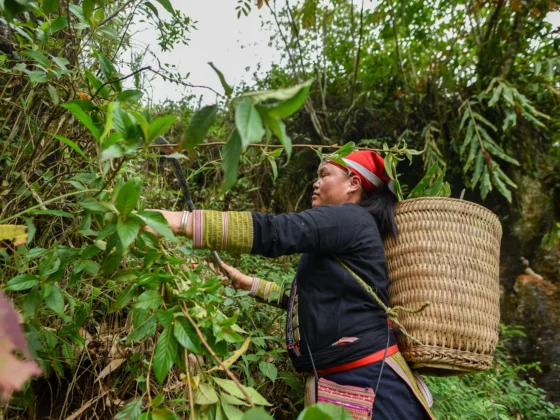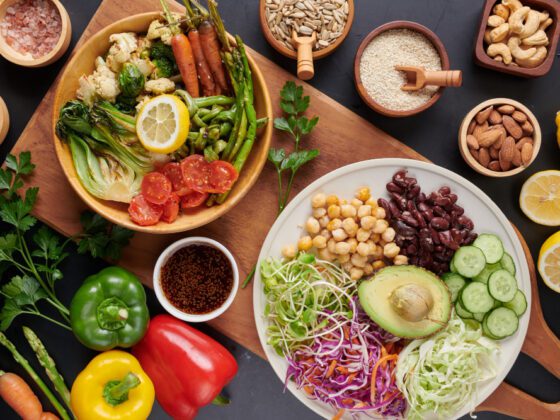Table of Contents Show
✍️ AI is summarizing:
A new study published in the American Journal of Clinical Nutrition suggests that adopting a longevity-optimized diet, similar to the traditional Vietnamese diet and combined with an active outdoor lifestyle, could significantly extend life expectancy.
The research team, consisting of an international group of experts, examined the potential gains in life expectancy that could result from transitioning from a typical national diet pattern to a more health-conscious eating plan.
Related post:
- Exploring Healthy Aging and Longevity Treatments
- The DIY Electrolyte Drink to Make For The Heat
- 4 Tested Running Exercise to Strengthen Glutes and Legs
The longevity-optimized diet: benefits across countries
The study focused on several countries, including the United States, the United Kingdom, France, Germany, Norway, China, and Iran. The researchers analyzed the consumption of 15 different food groups among adults in these nations, including whole grains, fruits, vegetables, nuts, legumes, fish, eggs, dairy, refined grains, red meat, processed meat, white meat, sugar-sweetened beverages, added sugars, and added oils.

They also considered the impact of an active outdoor lifestyle, which has been shown to have numerous health benefits. Interestingly, the traditional Vietnamese diet shares many similarities with the longevity-optimized diet identified in the study. Vietnamese cuisine is typically rich in whole grains, such as brown rice and whole-wheat noodles, as well as a variety of fresh fruits and vegetables. It also emphasizes the consumption of lean proteins, such as fish and poultry, while limiting the intake of red meat and processed meats.
The findings were quite remarkable. Among 40-year-old males and females, the estimated gains in life expectancy from moving to a longevity-optimized diet and an active outdoor lifestyle ranged from 6.2 years in China to 9.5 years in the United States. Even at the age of 60, transitioning to the optimal diet and embracing an active outdoor lifestyle was projected to increase life expectancy by seven years in the United States and the United Kingdom.
Key features of a longevity-optimized diet
- 7 servings of whole grains per day
- 5 servings of vegetables per day
- 5 servings of fruits per day
- A small handful of nuts
- 1 cup of beans, lentils, or peas
- 6 ounces of fish
- 0.5 eggs
- 2 ounces of white meat
Notably, this diet is very low in refined grains and completely excludes red meat, processed meat, sugar-sweetened beverages, and added sugars. When combined with an active outdoor lifestyle, such as regular hiking, cycling, or swimming, the benefits to longevity are even more pronounced.

Even making more moderate, “feasible” diet changes and incorporating an active outdoor lifestyle had significant longevity benefits. In the United States, adopting a diet halfway between a typical Western diet and the longevity-optimized diet, while also engaging in regular outdoor activities, at age 40 was predicted to increase life expectancy by 5 years. At age 60, this “feasible” diet and lifestyle change added 3.5 years of life for females and 3.9 years for males.
The researchers identified the three most impactful dietary changes in the United States as increasing whole grains and legumes while reducing sugar-sweetened beverages. They emphasized that “even with the most conservative approaches, the predicted gains in life expectancy from eating healthier and maintaining an active outdoor lifestyle are substantial.”
While the study did not specifically include the typical Canadian diet, its findings are still highly relevant as most Canadians consume a diet similar to the Western or American pattern. To transition towards a more longevity-optimized diet, the researchers suggest starting with feasible changes, such as adding one vegetable serving, one fruit serving, 3.5 whole grain servings, 0.5 handfuls of nuts, 0.5 cups of legumes, and 2.5 ounces of fish to your daily intake.
Simultaneously, engaging in regular outdoor activities can further enhance the benefits. Additionally, reducing the consumption of refined grains, red and processed meat, sugary drinks, and added sugars by one-half can significantly contribute to a longer, healthier life.
Conclusion
As the study highlights, a shift towards a longevity-optimized diet, similar to the traditional Vietnamese diet, coupled with an active outdoor lifestyle, has the potential to add years to our lives. By making gradual, sustainable changes to our eating habits and physical activity, we can significantly improve our overall health and well-being. Follow our official Facebook page now to receive more interesting information.













Thanks for sharing. I read many of your blog posts, cool, your blog is very good.
Can you be more specific about the content of your article? After reading it, I still have some doubts. Hope you can help me.
Can you be more specific about the content of your article? After reading it, I still have some doubts. Hope you can help me.
Your article helped me a lot, is there any more related content? Thanks!